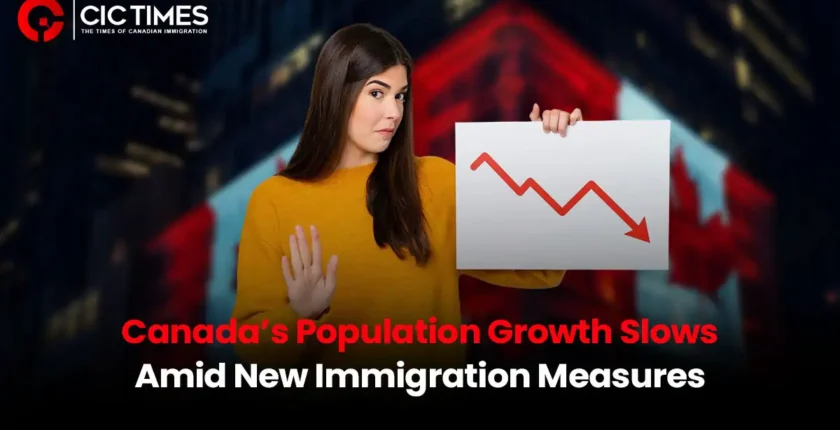Canada’s Immigration Policies Impact Population Growth
Recent Statistics Canada data highlights some notable changes in Canada’s immigration landscape, which have led to a significant slowdown in both temporary and permanent immigration. In the early months of 2025, Canada’s population growth was virtually flat, marking the lowest rate since the pandemic. The increase of just over 20,000 people during this period represents a stark contrast to the 0.3% growth rate seen from 2001 to early 2024. These shifts stem from extensive reforms aimed at easing pressures on housing and healthcare.
Why Is Immigration Slowing Down?
The changes in immigration policy have been a key factor in the recent slowdown. Here’s a closer look at what’s happening:
1. Reduced Permanent Resident Admissions
In October 2024, the new immigration plan for 2025-2027 set the target for permanent residents (PR) at 395,000—down from 485,000 the previous year. This shift aims for a more balanced immigration system that aligns with Canada’s capacity to provide necessary services and support to newcomers.
2. Caps on Temporary Residents
For the first time, Canada has introduced caps on temporary resident admissions, aiming for a total of 673,650, which includes both foreign workers and international students. Specific limits include:
- Study Permits: The target for new permits has been cut to 40% of the 2024 numbers, with a total of 550,162 planned for 2025.
- Temporary Foreign Workers: The low-wage LMIA (Labour Market Impact Assessment) stream has been discontinued in areas with an unemployment rate of 6% or higher.
3. Stricter Spousal Open Work Permit Requirements
Starting January 2025, spouses of foreign workers or students now face more stringent conditions to qualify for open work permits. This includes being enrolled in long-duration programs (minimum 16 months) or holding specific job types within Canada.
4. Limits on Post-Graduation Work Permits (PGWP)
The eligibility for PGWPs has also tightened. Students must now demonstrate that their field of study aligns with Canada’s job market needs, which could spell challenges for those in non-priority areas.
Impact on the Job Market
These changes have resulted in a marked decline in temporary residents—over 61,000 fewer in just the first quarter of 2025. Analysts suggest this could be a direct response to public concerns about housing costs and infrastructure pressures in major cities.
Navigating Express Entry and Future Strategies
The Express Entry Program, once a fast track for obtaining PR, is now facing challenges. Applicants may find:
- Higher CRS (Comprehensive Ranking System) score cut-offs
- Less frequent draws
- A greater focus on provincial selections and job offers
Adapting strategies and tools like the CRS calculator is now more important than ever for potential applicants looking to navigate this complex landscape.
Conclusion
Canada’s immigration policies are evolving towards a focus on quality over quantity, narrowing the pathways for skilled workers and international students. For those eyeing a move to Canada, staying informed and proactive about the immigration process is crucial. Whether you’re considering the Express Entry Program, Provincial Nominee Programs (PNPs), or studying your way to PR, understanding these changes is key to your success in 2025.
Need help or just curious?
Ask your question in the comments. Someone else may be wondering the same thing.
The following article was adapted from an external news source for our readers’ benefit. The original version is available here.
VJC-Policy & Government Announcements


